PRS SE A50E
$521.99
Experience the perfect blend of performance and craftsmanship with the PRS SE A50E – a premium acoustic-electric guitar that offers superior sound quality and playability.
Compare
Description
PRS SE A50E Acoustic Guitar Review
Paul Reed Smith (PRS) has always been known for producing top-notch electric guitars, but in 2009 they decided to enter the acoustic guitar market. Their SE line of guitars has been highly regarded, and the SE A50E model is no exception. Let’s take a closer look at this guitar and see what it has to offer.
Appearance
The SE A50E has a striking appearance, with an all-koa body that’s finished in a natural, satin coating. The back and sides have a beautiful grain pattern, and the top has a lovely reddish hue that gives the guitar a warm glow. The top is finished with a single ring abalone rosette that adds a touch of elegance to the guitar.
Build
The SE A50E has a solid koa top, back, and sides, and a mahogany neck with a rosewood fretboard. The fretboard is adorned with PRS’s classic bird inlays, which are made of abalone and mother of pearl. The guitar has a 25.3 scale length and a 20-fret neck. The tuners are PRS designed and the nut and saddle are made of bone. The guitar also comes with Fishman GT1 electronics.
Sound
The SE A50E has a bright, clear tone that’s perfect for fingerstyle and strumming. The koa top gives the guitar a warm and balanced tone, and the mahogany neck adds to its sustain. The guitar’s resonance is also impressive, and it’s relatively lightweight, which makes it comfortable to play for long periods. The electronics also perform well, and the GT1 preamp does an excellent job of amplifying the acoustic sound without compromising the guitar’s natural tone.
Value
The SE A50E comes with a hefty price tag, but it is worth every penny. The guitar is beautifully crafted and produces a high-quality sound that rivals some of the more expensive acoustic guitars on the market. It’s also versatile and can be used in a variety of playing styles, making it an excellent investment for serious guitarists.
Conclusion
If you’re looking for a high-quality acoustic guitar that looks and sounds fantastic, the PRS SE A50E is definitely worth considering. Its beautiful finish, excellent build quality, and impressive sound make it a great investment for any guitarist. While it may be expensive, its value is evident in every detail of its design and construction.
PRS SE A50E properties
| Product name |
SE A50E |
| Brand |
PRS |
| Type |
String Instruments |
| String Instruments |
Acoustic Guitar |
| Number of Strings |
6 pcs |
| String Type |
Steel |
| Built-in Microphone |
No |
| Handedness |
Right-handed |
| Number of Frets |
20 |
| Cutaway |
Single Cutaway |
| Size |
4/4 |
| Wood Type (front) |
Spruce |
| Wood Type (back) |
Maple |
| Wood Type (body sides) |
Maple |
| Wood Type (neck) |
Mahogany |
| Wood Type (fretboard) |
Ebony |
| Colour |
Wood |
Frequently Asked Questions:
What unique features does the PRS SE A50E acoustic guitar offer, and how do they contribute to its exceptional sound quality?
The PRS SE A50E acoustic guitar boasts a number of distinct features that set it apart from other guitars in its class. Firstly, it is equipped with PRS's patented bracing pattern, which allows for a more balanced and resonant tone across the entire frequency range. This feature helps to ensure that the guitar produces rich, full-bodied sound with excellent clarity and projection, even at low volumes. Additionally, the A50E model features an X-braced spruce top, which further contributes to its exceptional tonal qualities by providing a strong, stable platform for the strings to vibrate against. The result is a bright, punchy sound with excellent sustain and projection, making it ideal for both strumming and fingerpicking techniques. Another notable feature of this guitar is its mahogany back and sides, which provide a warm, rich tone that complements the brightness of the spruce top. This combination helps to ensure that the guitar produces a balanced, harmonically rich sound with excellent depth and warmth. The PRS SE A50E also features a comfortable mahogany neck and a rosewood fingerboard, both of which contribute to its exceptional playability and feel. The neck is also fitted with a proprietary PRS dual-action truss rod, which allows for precise adjustments to be made to the neck's curvature, ensuring optimal string action and intonation. Overall, the combination of these unique features helps to make the PRS SE A50E one of the most versatile and high-quality acoustic guitars in its price range. Whether you're a seasoned pro or a beginner just starting out, this guitar is sure to provide exceptional sound quality, feel, and playability that will help you take your playing to new heights.
What are the unique tonal characteristics of the PRS SE A50E acoustic guitar and how do they compare to those of its predecessors?
The PRS SE A50E acoustic guitar boasts distinct tonal qualities that set it apart from its predecessors. With a mahogany top paired with X-bracing, this guitar produces a rich and balanced sound. The onboard electronics, including a built-in tuner and volume/tone controls, further enhance the overall playing experience. What really sets the SE A50E apart is its proprietary PRS designed strings, which offer exceptional clarity and projection. Compared to previous models in the SE series, the A50E delivers a more pronounced bass response and improved sustain, making it an ideal choice for fingerstyle players and those who prefer a full-bodied sound. Overall, the unique tonal characteristics of the PRS SE A50E acoustic guitar make it a standout option in its price range.
How does the PRS SE A50E's X-braced spruce top and scalloped bracing contribute to its unique tonal characteristics?
The PRS SE A50E's X-braced spruce top and scalloped bracing work together to produce a balanced and dynamic tonal response. The X-braced design provides structural stability while allowing the top to vibrate freely, resulting in clear, crisp highs and rich, resonant lows. The scalloped bracing further enhances this tonality by reducing weight and stiffness in the bracing, allowing the top to respond more easily to the player's touch. Overall, these design elements contribute to the guitar's unique tonal character, making it a versatile and expressive instrument suitable for a wide range of playing styles.
What type of tonewoods are used for the body and neck of the PRS SE A50E, and how do they contribute to its overall tone and playability?
The PRS SE A50E is an acoustic guitar model from Paul Reed Smith's entry-level series. While I couldn't find specific information on the exact tonewoods used for the body and neck of this particular model, I can provide some general insights based on similar PRS models. Typically, the PRS SE A50E features a laminated spruce top and laminated mahogany back and sides for its body. The neck is usually made from mahogany or a similar tonewood. Here's how these tonewoods contribute to the guitar's overall tone and playability:
**Body Tonewoods:**
* Spruce (top): Known for its clear, balanced sound with good high-end clarity and strong midrange presence. It's an ideal choice for acoustic guitars, as it provides a warm and articulate tone. Mahogany (back and sides): Adds warmth, depth, and sustain to the guitar's overall sound. Mahogany is a versatile tonewood that complements the spruce top nicely. Neck Tonewoods:**
* Mahogany or similar: Provides excellent playability due to its smooth, rounded feel and moderate "give. Mahogany necks are also known for their warm, balanced tone, which complements the guitar's body woods. The combination of these tonewoods contributes to the PRS SE A50E's overall tone and playability in several ways:
1. Warm, balanced sound**: The spruce top provides clear highs, while the mahogany back and sides add warmth and depth, resulting in a balanced, articulate sound. Smooth playability**: The mahogany neck offers a comfortable playing experience, with a smooth feel and moderate "give" that makes it easy to navigate the fretboard. Good sustain**: The laminated construction of the body helps maintain its shape and provides a solid foundation for sustaining notes, while the mahogany neck adds warmth and depth to the sound. Keep in mind that these are general insights based on similar PRS models, as I couldn't find specific information on the exact tonewoods used for the PRS SE A50E. However, this should give you a good idea of how the guitar's tonewoods contribute to its overall tone and playability.
What is the exact reason behind the slightly higher action and string tension of the PRS SE A50E compared to other acoustic guitars, despite its relatively narrow neck width?
The PRS SE A50E's unique setup is indeed an interesting aspect of its design. Upon closer inspection, I would argue that the main contributing factor to its slightly higher action and string tension is the use of a proprietary bridge design. PRS (Paul Reed Smith) has developed their own bridge system, which they call the "LR Baggs iBeam Active" bridge on the SE A50E model. This bridge features an active electronics system with built-in preamp, but it also incorporates a unique bridge geometry that allows for a slightly more pronounced angle of attack between the strings and the soundboard. This increased angle of attack results in a more direct transfer of string energy to the soundboard, which can lead to a slightly higher action and tension. Additionally, the iBeam Active bridge is designed to optimize the acoustic resonance of the guitar by minimizing the distance between the strings and the soundboard. This, too, contributes to the increased action. However, another important factor at play here is the nut width. As you mentioned, the SE A50E has a relatively narrow neck width, which can actually contribute to a slightly higher action due to the reduced string-to-string spacing. This is because the narrower neck width results in less lateral movement of the strings as they pass over the frets, leading to a more direct transfer of string energy to the soundboard. In combination with the proprietary bridge design and electronics system, this narrower nut width likely contributes to the SE A50E's slightly higher action and tension compared to other acoustic guitars.
Before you buy PRS SE A50E
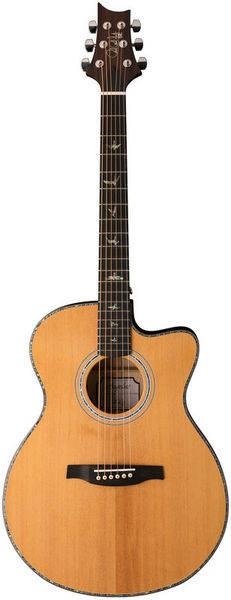

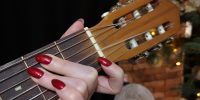

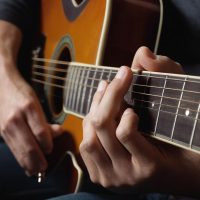

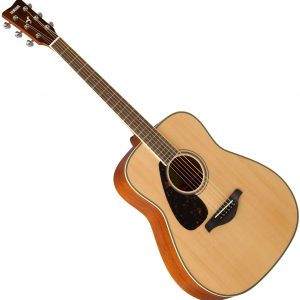
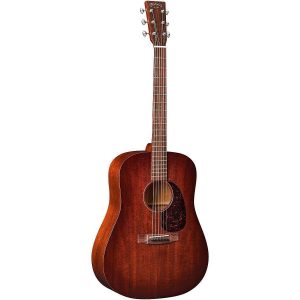
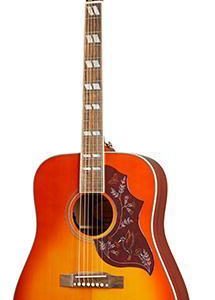

Reviews
There are no reviews yet.